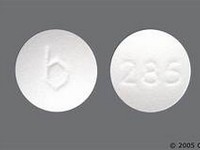dipyridamole
CLINICAL USE
Calcium-channel blocker:Prophylaxis and treatment of angina Hypertension
DOSE IN NORMAL RENAL FUNCTION
180–500 mg in up to 3 divided doses
PHARMACOKINETICS
DOSE IN RENAL IMPAIRMENT
GFR (mL/MIN)
DOSE IN PATIENTS UNDERGOING RENAL REPLACEMENT THERAPIES
IMPORTANT DRUG INTERACTIONS
Potentially hazardous interactions with other drugsAnaesthetics: enhanced hypotensive effect Anti-arrhythmics: increased risk of bradycardia, AV block and myocardial depression with amiodaroneAntibacterials: metabolism increased by rifampicinAnti-epileptics: effect probably reduced by barbiturates, phenytoin, and primidone; enhanced effect of carbamazepine; increased levels of phenytoinAntihypertensives: enhanced hypotensive effect; increased risk of first dose hypotensive effect of post-synaptic alpha-blockersAntivirals: concentration increased by amprenavir, atazanavir and ritonavir – reduce dose of diltiazem with atazanavir; concentration reduced by efavirenzBeta-blockers: risk of bradycardia and AV block if co-prescribed with beta-blockersCardiac glycosides: increased digoxin concentrationCiclosporin: increased ciclosporin concentrationsCilostazol: increased cilostazol concentration – avoid concomitant useIvabradine: avoid concomitant use Sirolimus: sirolimus concentration increasedStatins: increased myopathy with simvastatin. Do not exceed 40 mg of simvastatin with diltiazem.1Tacrolimus: increased tacrolimus concentrationTheophylline: enhanced effect of theophylline
ADMINISTRATION
Reconstition
–
Route
Oral
Rate of Administration
–
Comments
–
OTHER INFORMATION
Active metabolites Monitor heart rate early on in therapy. If falls below 50 beats/minute, do not increase dose Maintain patient on same brand
